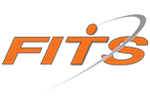
ACL ruptures have been well studied in World Cup Ski racers, revealing 3 primary mechanism – 1) slip-catch, 2) landing back weighted, 3) dynamic snow-plow. [1]. The return to sport is not an easy road and there are no guarantees that you’ll return to the same level of performance (stats). Likewise ACL re-injury in individuals with a previous ACL injury is 25x more likely than those who have not suffered an ACL injury. This startling fact has raised many to question our return to sport criteria [2-4]. Likewise in personal communication with Matt Jordan and his work with the Canadian Alpine Ski Team he observes deficits in World Cup Skiers who undergo ACLR for over 2 years post-surgery in their rate of force development of their involved vs non-involved side. Furthermore, Petersen et al, (2013) who investigated the criteria orthopedic surgeons in Germany use to recommend return to play, discovered that the primary parameter was time, range of motion and ligamentous tests[5]. Peterson concluded, “the majority of surgeons do not consider muscle function, jump tests, alignment tests, and proprioception as relevant return to sport criterion. However, these are two crucial parameters for return to sports”
So what are we to make of all this?
We need better criteria to evaluate return to sport. At FITS we utilize the following approach:
Basic Movement Assessment
Performance Profile
Conditioning
After all this we begin the Return to Ski Program. An example program we’ve used is based on Kokmeyer[6], Director and Physical Therapist at Howard Head Sports Medicine in Denver.
| Day 1 | Day 2 | Day 3 | Day 4 | Day 5 | Day 6 | Day 7 |
| Progression 1 | OFF | Progression 1 & 2 | Progression 1 & 2 | OFF | Progression 2 | Progression 2 |
Progression 1: Directed Free Skiing
- Free skiing, as outlined by level, focusing on basic athletic stance, balance, joint angles, turn shape
- Free skiing should begin on groomed, flat to moderate terrain
- Work to achieve even balance on both legs with trust and confidence on both skis
- Free ski in sections, working up to longer/full-length runs
- Non-arcing to arcing turns
Progression 2: Drills (Below Are Examples)
- Skiing to be performed on groomed, flat to mild terrain
- Sideslipping into smooth stop on fall line
- Sideslipping into distinctive stop on fall line
- Sideslipping diagonally across fall line and switching sides
- Sideslipping to edge-set and carving across fall line
- Diagonal skiing, carving
- Diagonal skiing, carving with flattening of ski
- Sliding turn in natural-stance position
- Sliding turn in squat position
- Sliding turn in squat position with squat pumps
- Single-leg sliding turns, “heel lift” opposite ski
- Single-leg sliding turns, “cross-hip” opposite ski
- Sliding short to medium turns with pole plant
- Sliding short to medium turns without pole plant
- Turns with 1 leg lifted
- Turns with 1000-ft stepping (stepping back and forth throughout the turn)
- Turns with small hops
- Bere, T., et al., Events leading to anterior cruciate ligament injury in World Cup Alpine Skiing: a systematic video analysis of 20 cases. Br J Sports Med, 2011. 45(16): p. 1294-302.
- Return to sport: when should an athlete return to sport after an ACL surgery? J Orthop Sports Phys Ther, 2011. 41(6): p. 388.
- Angelozzi, M., et al., Rate of Force Development as an Adjunctive Outcome Measure for Return-to-Sport Decisions After Anterior Cruciate Ligament Reconstruction. J Orthop Sports Phys Ther, 2012. 42(9): p. 772-80.
- Harris, J.D., et al., Return-to-Sport and Performance After Anterior Cruciate Ligament Reconstruction in National Basketball Association Players. Sports Health, 2013. 5(6): p. 562-8.
- Petersen, W. and T. Zantop, Return to play following ACL reconstruction: survey among experienced arthroscopic surgeons (AGA instructors). Arch Orthop Trauma Surg, 2013. 133(7): p. 969-77.
- Kokmeyer, D., M. Wahoff, and M. Mymern, Suggestions from the field for return-to-sport rehabilitation following anterior cruciate ligament reconstruction: alpine skiing. J Orthop Sports Phys Ther, 2012. 42(4): p. 313-25.
